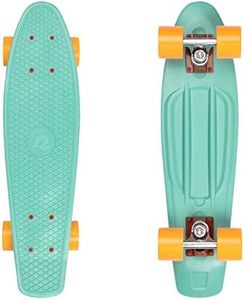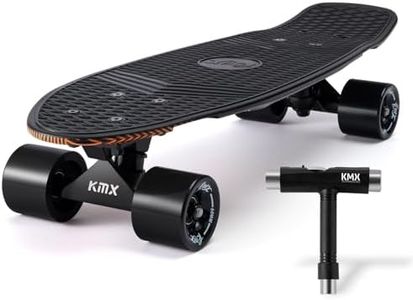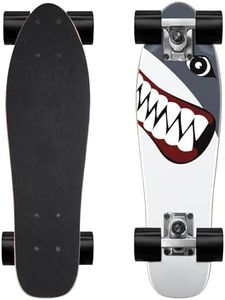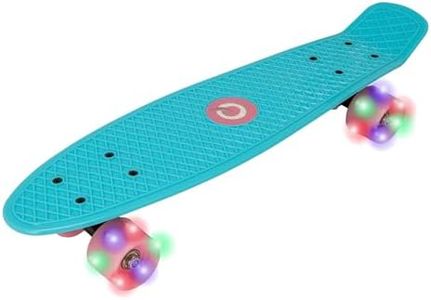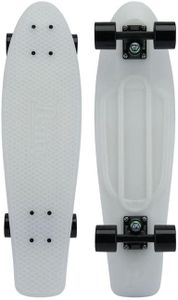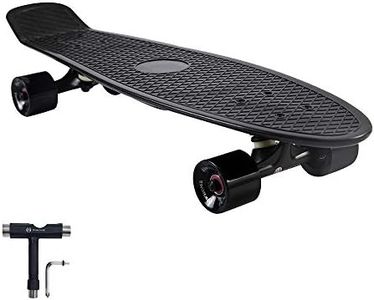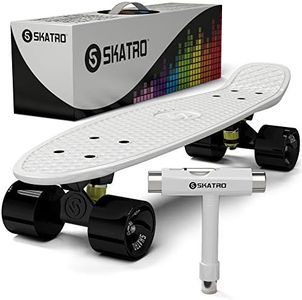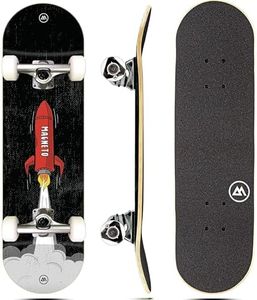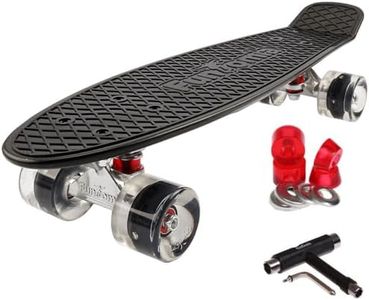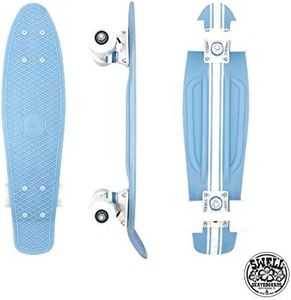We Use CookiesWe use cookies to enhance the security, performance,
functionality and for analytical and promotional activities. By continuing to browse this site you
are agreeing to our privacy policy
10 Best Penny Boards
From leading brands and best sellers available on the web.Buying Guide for the Best Penny Boards
Penny boards are small, lightweight skateboards that have become popular for their easy portability and fun ride, especially among beginners and casual riders. Choosing the right penny board involves understanding the key features and how they impact performance, comfort, and your overall riding experience. Rather than getting distracted by trendy colors or graphics, focus on the board’s physical characteristics and how they fit your style and ability level. By knowing what each specification means, you can find a penny board that matches your needs whether you’re commuting, cruising around campus, or just enjoying a casual ride.Deck SizeThe deck size refers to the length and width of the board where you stand. Most penny boards come in common lengths, typically around 22 inches and 27 inches. Smaller decks (around 22 inches) are extra compact, making them ultra-portable and good for tight turns, but may feel less stable, especially for beginners or users with larger feet. Larger decks (like 27 inches) offer more space and stability, which is better for comfort and can make balancing easier. When picking a deck size, consider your shoe size, balance skills, and whether you prioritize portability or ride comfort.
Deck MaterialDecks are most commonly made from plastic or sometimes a blend of composite materials. Plastic decks are flexible, lightweight, and weather-resistant, making them ideal for casual riding and easy to carry. Some premium boards may include reinforcements for added strength. A more flexible deck gives a smoother ride but might feel less supportive at high speeds or for heavier riders. If you want a board that can handle rough use and last longer, check for reinforced materials. Think about where and how you’ll ride—if you want a board just for smooth sidewalks, basic plastic is fine; for heavier use, look for extra durability.
WheelsWheel size and hardness both affect how your penny board rolls and feels. Smaller wheels (around 59mm) are standard and provide a good mix of speed and control for city riding. Larger wheels give a bit more speed and smoothness over cracks, while smaller wheels are lighter and more responsive. Wheel hardness is rated on the durometer scale (usually 78A-85A for penny boards). Softer wheels (lower numbers) grip the pavement better and absorb more bumps, making for a comfortable ride—ideal if you’re cruising on rough surfaces. Harder wheels (higher numbers) are faster on smooth turf but less forgiving on rough ground. Choose your wheels depending on where you plan to ride most often.
TrucksThe trucks are the metal parts under the board that hold the wheels and allow you to turn. Truck width is usually matched to the deck width. Wider trucks offer more stability, while narrower ones allow for quicker turns. Trucks’ tightness and build quality play a role in how easily the board turns—looser trucks are better for sharp turns and carving, while tighter ones are best for stability at higher speeds. Pick truck characteristics based on your preference for stability versus maneuverability, and adjust tension as you get used to your board.
BearingsBearings are small metal rings inside the wheels that help them spin smoothly. Their quality is often rated using the ABEC scale, with higher numbers suggesting higher precision and potentially a smoother and faster ride. However, for penny boards, ultra-high-speed bearings aren’t always necessary, as these boards are used for cruising rather than tricks or racing. Smooth, reliable bearings will make the ride feel effortless. Look for bearings that are rust-resistant and easy to maintain, especially if you plan on riding near wet or sandy areas.
Weight CapacityThis is the maximum rider weight the penny board is designed to support without risk of breaking. Most boards are built to hold kids and average-weight adults, but if you’re on the heavier side or plan to carry a backpack regularly while riding, make sure to check the weight rating. Riding a board above its rated weight can reduce its lifespan and affect safety.

